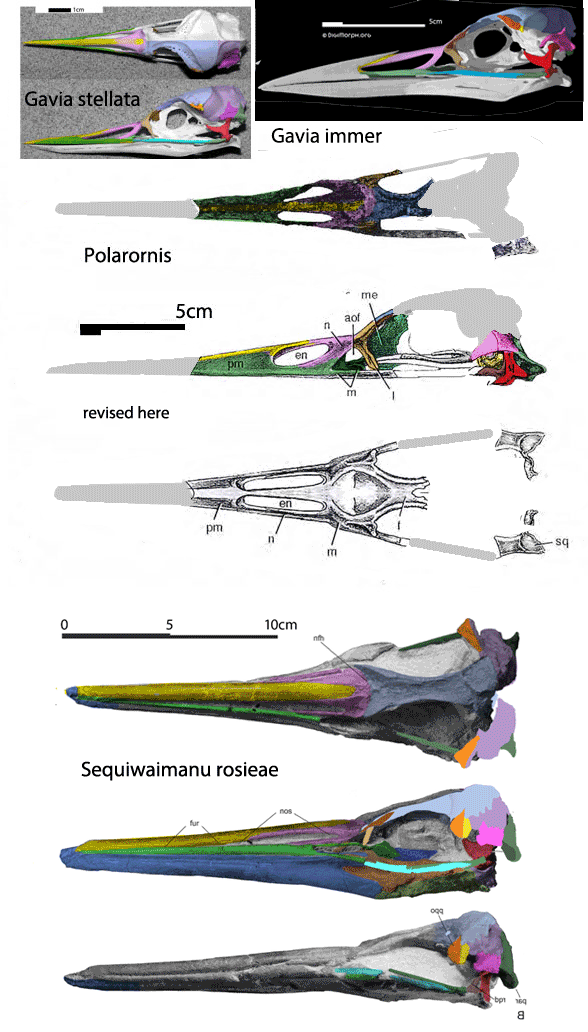Earlier we looked at
the increasingly supported hypothesis of a long ghost-lineage of crown birds evolving slowly and almost invisibly throughout the Cretaceous. This hypothesis based on the presence of a last common ancestor for crown birds, Archaeorhynchus, in the Early Cretaceous.
Today a Late Cretaceous loon from Antarctica,
Polarornis (Chatterjee 2002; Fig. 1) comes under review, but does not enter the LRT (too few traits).

Chatterjee 2002 reported,
“the morphology of a new Antarctic loon, Polarornis gregorii, is described on the basis of a partial skeleton that includes the skull, vertebrae, a sternal fragment, and hindlimbs. The material is incomplete, but beautifully preserved. It was found during the austral summer of 1983 in the Late Cretaceous Lopez de Bertodano Fonnation of Seymour Island, Antarctica, along with plesiosaurs, mosasaurs, and ammonites.”
The Lopez de Bertodano Formation extends from 70 to 64mya. During that time the southern continents and islands were much closer together (Fig. 2).
Chatterjee 2002 reported,
“The skull of Polarornis is extremely avian and modern looking, unlike that of any other Mesozoic bird. It exhibits two derived features that are absent among Cretaceous aquatic birds: lack of teeth and the closing of sutures. The estimated skull length of Polarornis is 18 cm, about the size of a common loon (Gavia immer).”
The skull of Gavia immer (Fig. 1) documented in Digimorph.org is actually around 15cm (Fig. 1). Apparently Chatterjee restored Polarornis closer to the proportions of shorter rostrum Gavia stellata (Fig. 1). If the skull of Polarornis is restored closer to the proportions of Gavia immer it might have been 22 cm long. That is close to the size of the related Paleocene penguin-mimic loon from nearby New Zealand, Sequiwaimanu (FIg. 1).
According to Wikipedia,
“It [Polarornis] is often claimed to be an ancestor of modern loons (divers), but some scientists have questioned this. Other Mesozoic bird specialists supported the classification of Polarornis as an early member of the loon lineage.”
Comparisons to the extant loon,
Gavia (Fig. 1) indicate a close match. Loons (Fig. 2) are highly derived birds, which means they must have had a long list of precursor taxa had to appear between Archaeorhynchus in the Early Cretaceous and Polarornis in the Late Cretaceous.
Finding many more modern birds in the Cretaceous
is a prediction made by the LRT. We already have a goose, Asteriornis. Together with Polarornis, that’s a good start to keep up the search for Cretaceous vultures, secretary birds, terns and crows.
References
Chatterjee S 1989. The oldest Antarctic bird. Abstracts of the Journal of Vertebrate Paleontology. 8 (3): 11A.
Chatterjee S 2002. The morphology and systematics of Polarornis, a Cretaceous loon (Aves: Gaviidae) from Antarctica. Zhou Z and Zhang F Eds. Proceedings of the 5th Symposium of the Society of Avian Paleontology and Evolution. Beijing Science Press.


